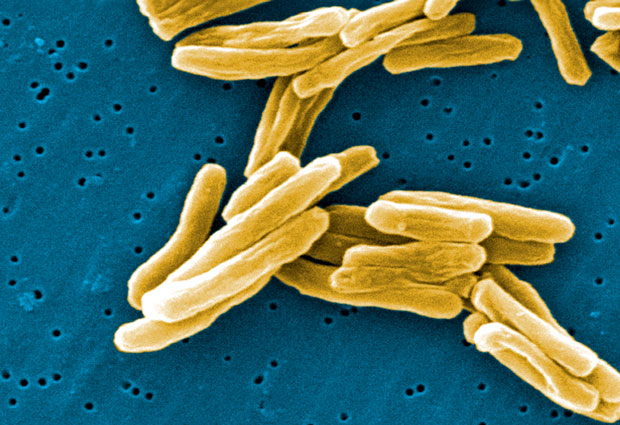In a nutshell
- structural biologists at EMBL largely contributed to the identification of a novel anti-TB drug candidate
- the compound was also shown to be active against three other human pathogens

EMBL researchers help to design a lead compound active against four different pathogens
Due to the alarming spread of totally drug resistant strains of Mycobacterium tuberculosis (TB), scientists are seeking new drugs to combat this life-threatening pathogen. Stephen Cusack, head of EMBL’s Grenoble site; and Andrés Palencia, an EMBL alumnus now at the Grenoble Institute for Advanced Biosciences contributed important structural biology expertise to a large consortium of chemists, biochemists and microbiologists led by Anacor Pharmaceuticals (Palo Alto) to help tackle this problem.
Their work resulted in the discovery of a promising new, orally available, anti-TB drug candidate, able to reduce the infection in mice with comparable potency to current frontline drugs. Furthermore, the same compound was also shown to be active against three other human pathogens. The results were recently published in three papers in Antimicrobial Agents and Chemotherapy.
Four birds with one stone
The researchers demonstrated that benzoxaboroles, a family of small molecules developed by Anacor, have antibacterial or antiparasitic activity against the pathogens behind four widespread and debilitating diseases: TB, malaria, cryptosporidiosis, and toxoplasmosis. These pathogens are very different kinds of organisms, but they all have one feature in common: an enzyme called leucyl-tRNA synthetase, or LeuRS, which is the target of benzoxaboroles.
LeuRS is one of a family of proteins that are essential to protein synthesis in all living cells. Its job is to attach the amino acid leucine to the corresponding leucine-specific transfer RNA (tRNAleu) which is used by the ribosome to incorporate leucine into the growing polypeptide chain during protein synthesis. Sometimes LeuRS mistakes leucine for another similar amino acid such as isoleucine, but remarkably the enzyme can correct this error using a second active site, called the editing site.
Benzoxaboroles work by binding to the LeuRS editing site and at the same time attaching themselves to the end of the tRNAleu where leucine would normally bind. Thanks to the boron atom contained in the benzoxaborole, the tRNAleu and LeuRS are held together so tightly that they can no longer function normally. “When you block LeuRS activity you stop protein synthesis and kill the pathogen,” Palencia explained.
Complex interactions
To help in the drug development process, Cusack and Palencia used X-ray crystallography and biophysical measurements to show in detail how LeuRS, tRNAleu and benzoxaboroles interact with each other. “Based on the high resolution 3D structures we determined, Anacor chemists were able to tailor the compounds to better inhibit TB’s LeuRS,” Palencia said. The compound reported in the publication is as good as currently used TB drugs but, crucially, is also equally active against drug resistant strains.
Since all organisms contain LeuRS the researchers decided to test the benzoxaboroles against other pathogens. They found that the same compounds were also active against the three debilitating and widespread single-celled parasites causing malaria, cryptosporidiosis, and toxoplasmosis. Cusack and Palencia determined structures of the Plasmodium and Cryptosporidium LeuRS which are different from those of bacteria. “By determining crystal structures of LeuRS from each pathogen as well as the human LeuRS we can exploit differences in the benzoxaborole binding site to tailor compounds to be more active and selective for each individual parasite, and we can also ensure that the human LeuRS is not targeted, to avoid unwanted side-effects,” said Cusack.
Even better anti-TB benzoxaboroles are in the pipeline and are expected to go into clinical trials soon, the next critical step in the long drug development process.
